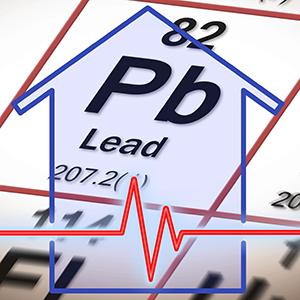Research teams from NIEHS and Glasgow University found that a widely prescribed drug for treating high blood pressure called amlodipine is not dangerous for patients, despite recent concerns from researchers that taking amlodipine may have risks. The study, which found that taking amlodipine is unlikely to result in an increase in heart failure in patients, was published Oct. 12 in Function, an Oxford University Press journal.

“The clinical impact of the study and the benefit to patients arises from our approach of combining basic science to understand what’s happening at the cellular level with analysis of data from a large number of patients with high blood pressure,” said Anant Parekh, D.Phil., NIEHS Signal Transduction Laboratory chief and one of the study’s authors. “Both aspects of the study took a significant amount of time, but were important to persevere, given the overall impact this research can have on patients.”
Drug’s safety once questioned
One widely prescribed drug for treating hypertension, which is high blood pressure, is amlodipine, now taken regularly in pill form by more than 70 million Americans. Amlodipine inhibits a type of calcium channel that is found on blood vessels. When the calcium channel opens, calcium enters the muscle and causes it to constrict, increasing blood pressure. Amlodipine prevents calcium from coming in, leading to vessel relaxation and a decrease in blood pressure.
Recently, some researchers have questioned the benefit of amlodipine for treating hypertension. Studies suggested that amlodipine may activate a different type of calcium channel, resulting in changes to blood vessels and an increase in heart failure in patients. Removing amlodipine as a prescribed antihypertensive medication carries significant health implications, because hypertension is such a common health condition.
New review reveals safety, efficacy
The researchers found that amlodipine has unique chemical properties that give the erroneous impression of activation of calcium influx. When the study’s authors controlled for these chemical properties, they found that amlodipine did not activate calcium channels. A meta-analysis combining clinical trials and a prospective real-world analysis both showed that amlodipine was not associated with increased heart failure or other cardiovascular problems.
“Removal of amlodipine as a front-line therapy would most likely increase deaths from hypertension dramatically,” Parekh said. “The study recommends that amlodipine remain a first-line treatment for high blood pressure.”
Approximately 700,000 Americans die from high blood pressure each year and researchers believe some 116 million Americans (and one in five adults worldwide) have the disease, which is responsible for 7.6 million deaths per year. If untreated, high blood pressure significantly increases the risk of premature death through heart attack, stroke, or kidney disease.
This article originated from an Oct. 12 press release by Oxford University Press titled “Commonly prescribed hypertension drug, amlodipine, not actually dangerous.”









